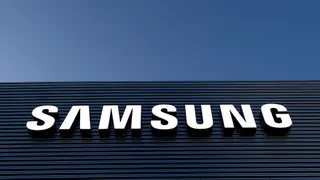- By Alex David
- Mon, 17 Nov 2025 11:15 PM (IST)
- Source:JND
Amazon Leo, its new Low-Earth-Orbit broadband service developed through years of work under Project Kuiper, was officially introduced today. According to Amazon, Leo aims to address an essential yet persistent issue: millions still struggle with reliable internet even when living near major towns. By using thousands of satellites positioned in low orbit around Earth and their respective Earth stations as "connectors", Leo could help expand high-quality broadband availability dramatically for countries like India where rural and semi-urban regions continue to experience limited broadband access - direct competition with Starlink!
Why Amazon Built Leo
Amazon says Leo was born out of a straightforward insight: digital progress means little if vast pockets of the world remain unconnected. Remote terrains, forests, mountains and island regions often lack infrastructure because laying fibre or towers is either too expensive or simply unfeasible. Instead of trying to fix the ground network, Amazon decided to build one in space. Project Kuiper served as the foundation for this vision, and after successful test deployments, the company formalised the name Amazon Leo, referencing the low-Earth orbit where these satellites operate.
ALSO READ: Indian Enterprises Are Finally Scaling AI: The Numbers Show It
How Amazon’s LEO Network Works
The Leo system runs on three major components. Ground stations manage data routing, monitor satellite health and keep the network aligned. The satellite fleet forms the core of the system, travelling a few hundred kilometres above Earth and constantly handing off signals as they move across the globe. On the user side, Amazon is preparing compact receiver terminals for homes, shops and businesses. These devices allow customers to connect directly to the satellites overhead without depending on cable networks or fibre infrastructure.
Recommended For You
Amazon’s Massive Satellite Deployment Plan
To build a fully functioning network, Amazon aims to deploy more than 3,000 satellites in the first phase. So far, 153 satellites are already in orbit, and regular launches will continue throughout the next few years. The company has signed over 80 launch contracts with partners including SpaceX, Blue Origin and United Launch Alliance—one of the largest launch agreements ever undertaken by a private player. Amazon’s US-based production facility can manufacture up to five satellites a day, each shipped to a dedicated testing centre near the Kennedy Space Center before launch.
Expected Internet Speeds on Amazon Leo
Amazon plans to offer multiple speed tiers depending on user needs.
Leo Nano is designed for everyday home use with speeds up to 100 Mbps.
Leo Pro pushes that to 400 Mbps for offices and small businesses.
Leo Ultra goes all the way to 1 Gbps, targeting heavy-data users and large organisations.
Because these satellites orbit closer to Earth than older systems, Amazon reports that users should experience significantly lower latency for high-quality streaming, online learning, remote work and gaming experiences.
ALSO READ: LG QNED MiniLED AI TV 2025 Review: Premium Performance Without The Premium Price
Availability Timeline
Amazon plans to begin offering the Leo service to select enterprise customers by late 2025. Wider public availability is planned for 2026, once more satellites are operational. The company believes Leo can help narrow the digital divide in countries where rural and semi-urban areas still face weak or unreliable connectivity—India being one of the most significant markets in that category.
Conclusion
Amazon Leo represents one of their most ambitious infrastructure projects to date, raising the stakes for global players like Starlink in satellite broadband services. If Amazon can successfully deliver stable internet in remote regions with low latency speeds then Leo could revolutionise digital access for millions - especially markets with challenging terrain or uneven growth that might otherwise require ground-based systems for coverage expansion.





